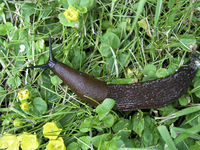
Photo from wikipedia
We examined the contact zone of two parapatric species of grass snake (Natrix astreptophora and Natrix helvetica) in southern France. To this end, we used comprehensive sampling, analysed mtDNA sequences… Click to show full abstract
We examined the contact zone of two parapatric species of grass snake (Natrix astreptophora and Natrix helvetica) in southern France. To this end, we used comprehensive sampling, analysed mtDNA sequences and microsatellite loci, and built Species Distribution Models for current and past climatic conditions. The contact zone had established by the mid-Holocene during range expansions from glacial refuges in the Iberian Peninsula (N. astreptophora) and southern or western France (N. helvetica). The contact zone represents a narrow bimodal hybrid zone, with steep genetic transition from one taxon to the other and rare hybridization, supporting species status for N. astreptophora and N. helvetica. Our results suggest that the steepness of the clines is a more robust tool for species delimitation than cline width. In addition, we discovered in western France, beyond the hybrid zone, a remote population of N. helvetica with genetic signatures of hybridization with N. astreptophora, most likely the result of human-mediated long-distance dispersal. For N. helvetica, we identified a southern and a northern population cluster, connected by broad-scale gene flow in a unimodal hybrid zone running across France. This pattern either reflects genetic divergence caused by allopatry in two microrefuges and subsequent secondary contact or introgression of foreign alleles into the southern cluster.
Journal Title: Biological Journal of The Linnean Society
Year Published: 2020
Link to full text (if available)
Share on Social Media: Sign Up to like & get
recommendations!